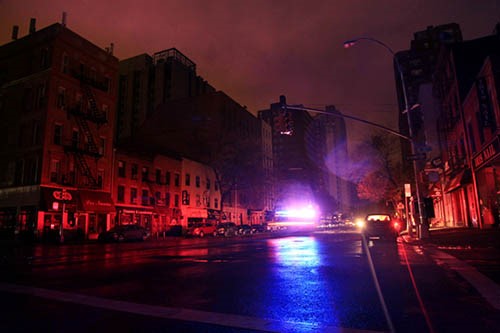Among the difficulties in New York during Hurricane Sandy, the most striking may have been the failure of emergency generators that prompted the evacuation of two hospitals. When even backup systems are exposed as unexpectedly fragile, it is clearly time to adjust our design thinking. Extreme weather events, rising seas, volatile energy prices, and all of the other unpredictable dangers that seem to be part of our time in history can be better dealt with through design informed by ‘resilience.’
The Concept of Resilient Design

Resilience is a concept that comes to the design and construction industry from ecology. Whether used in ecology, psychology, design, or a number of other fields, the term resilience indicates the ability to survive damage and return to a normal state after a disturbance. To be clear, resilience is not synonymous with disaster preparedness. Preparedness seeks to provide for basics needs in the event of a catastrophic collapse of basic services. Resilient design seeks to maintain a building or infrastructure’s ability to continue normal operation despite a catastrophe.
Resilient design is scalable. It applies to individual building systems as well as to districts, cities and regions. Like sustainable design, resilient design can be best defined by a desired outcome rather than by a set of design strategies or features.
The concept of resilience came about with the threat of terrorism in the years after 2001. More recently, BuildingGreen, Inc. Founder, Alex Wilson, has steered the conversation on resilience to include a greater focus on passive survivability of extreme weather events. With the launch of the Resilient Design Institute, Wilson promotes the strong synergy between sustainable and resilient design – an uplifting idea in a conversation that can easily stray into doom and gloom.
What Resilient Design Aims to Achieve
A building that is sealed up tight and mechanically ventilated may become unusable when energy supplies fail; whereas, a building with operable windows could provide ventilation, some thermal comfort, and could continue operation. Resilient design goals can naturally lead to the use of passive systems: daylighting, natural ventilation, passive cooling and heating, etc. The fact that these approaches can also lower energy use and improve occupant comfort is a positive synergy.
This is not to say that all resilient design solutions are necessarily low-tech. Indeed, advanced technology may be key, with an important emphasis on the appropriate scale of technology. Arguably, an advanced power system of many micro-grids incorporating distributed generation is more resilient than one huge grid, which can collapse due to a failure at any one point.
In Sandy’s wake, though, even buildings with solar photovoltaic systems were without power when their grid-connected systems shut down to avoid endangering line workers. This paradox could be solved through smarter electrical design, but this requires thinking through all possible outcomes and designing for them. In short, it requires resilient design.
For further reading: Resilient Design Institute. See in particular Alex Wilson’s discussion of how he came to found the institute.
“Blackout” photo by Flickr User Chris Ford (www.LostManProject.com). Used under a Creative Commons license.

